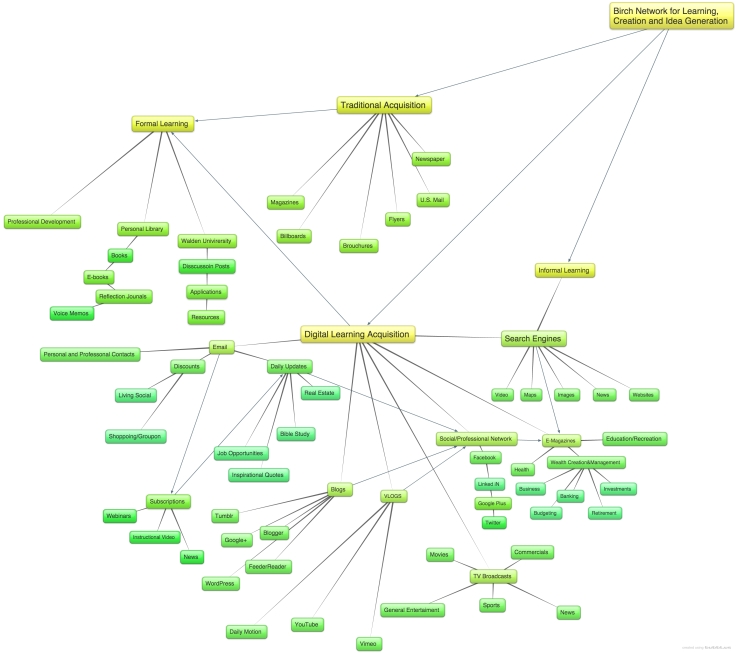Using Project Management to Start a Business
Although my father attended a top ivy league school for undergraduate school and one of, if not the top graduate business school in the United States, he did not force me to go into business, or even try to persuade me to, he always kind of just warned me about business and told me to learn all that I could before taking the plunge.
Since then, I have always wanted to start my own business. I watched him start and run a businesses for 30 years but never understood how he did it. He did always encourage me not to be afraid to make mistakes, to live life faithfully and wisely, to work hard, and to be smart.
Currently, one of my projects involves setting up a network for people of all ages to glean from online content and participate in meet-up activities that will assist in their personal and professional aspirations. It is a for profit entity that develops, designs, and delivers learning events and learning objects for people that have the desire for life and/or professional coaching.
So far, the biggest success I’ve had is taking the time to envision and write about the possibilities of how to bring this organization to life. Everything else has been a struggle. I have come up with numerous vague objectives and performed scant inquiries around a number of key start-up scoping procedures such as support and consulting, but have yet to produce anything thorough or substantial like a formal business/marketing plan, literature review, market analysis, or feasibility study.
Despite not being an ivy leaguer and b-school grad, I expect that starting with the following Project Management strategies will, nevertheless, help my business start-up successfully:
- Initiating – I have already initiated the ideas of the organization, however for the organization to come to life I will need to be able to attach clear objectives and tasks which are attainable.
- Planning- My plans to date have been sporadic and inconsistently documented. I have things written in several places and need to have all pertinent information centralized. This plan will include a timeline and budget drafts.
- Executing – The tasks that have been executed so far has involved gathering names of individuals that could serve in a support and/or partnership capacity in order to build the teams necessary to produce top notch learning objects and cool and sophisticated learning events.
- Monitoring and Controlling -Developing processes and utilizing digital instruments and applications to enhance: communicating and documenting expectations, problem solving, troubleshooting, listening to concerns, suggestions, and comments, motivating, decision making and negotiating.
Undoubtedly, there will be more to learn and do to start-up this business of mine, however, these elements of Project Management will allow me to methodically approach this part of the process and to successfully build it to full potential.
 I think that the definition of distance learning is constantly changing for a three reasons. First, education psychology and sociology are still very new to studying the effects of technology on cognitive development in part because technology is developing faster than the effects can be measured. Secondly, there is an overlap of generational perspective as what technology is and how it is used to enhance or diminish learning. Finally, there are different phases of separation that exist between the learner and the instructor. Separation is not exclusive to “time and geography” as Dr. Simonson suggests. I think that there is much more that causes this gap, actually, in my opinion, it exists even without the use of technology. This gap widens as a result of what Boling et. al. quoted as a “systematic lack of awareness” in appropriate uses of technology in the field of education. This lack of awareness could be from lack of exposure to technology. However, technology is simply defined by Merriam Webster defines as the application of knowledge.
I think that the definition of distance learning is constantly changing for a three reasons. First, education psychology and sociology are still very new to studying the effects of technology on cognitive development in part because technology is developing faster than the effects can be measured. Secondly, there is an overlap of generational perspective as what technology is and how it is used to enhance or diminish learning. Finally, there are different phases of separation that exist between the learner and the instructor. Separation is not exclusive to “time and geography” as Dr. Simonson suggests. I think that there is much more that causes this gap, actually, in my opinion, it exists even without the use of technology. This gap widens as a result of what Boling et. al. quoted as a “systematic lack of awareness” in appropriate uses of technology in the field of education. This lack of awareness could be from lack of exposure to technology. However, technology is simply defined by Merriam Webster defines as the application of knowledge.
